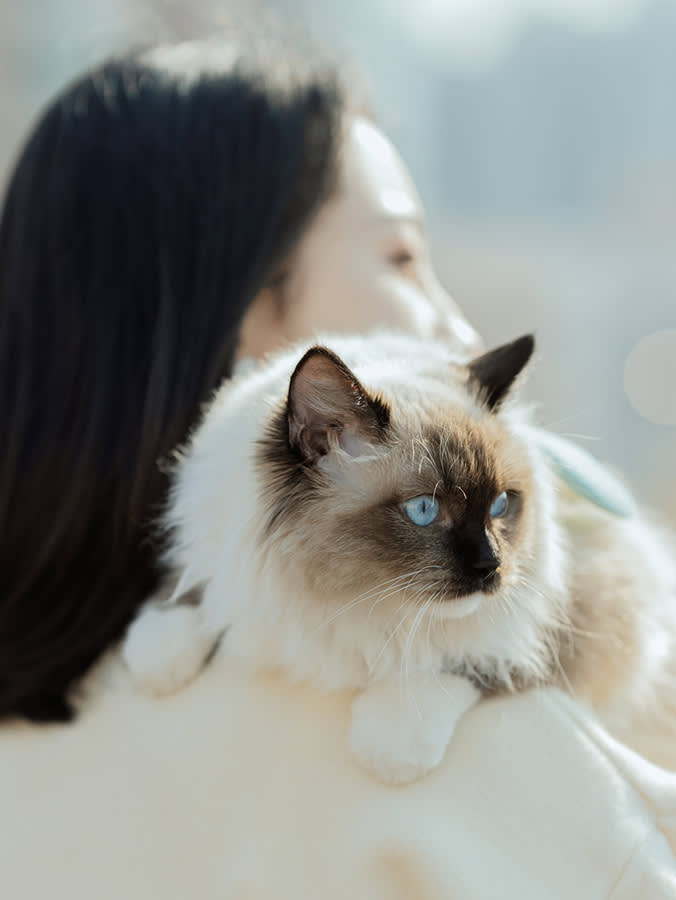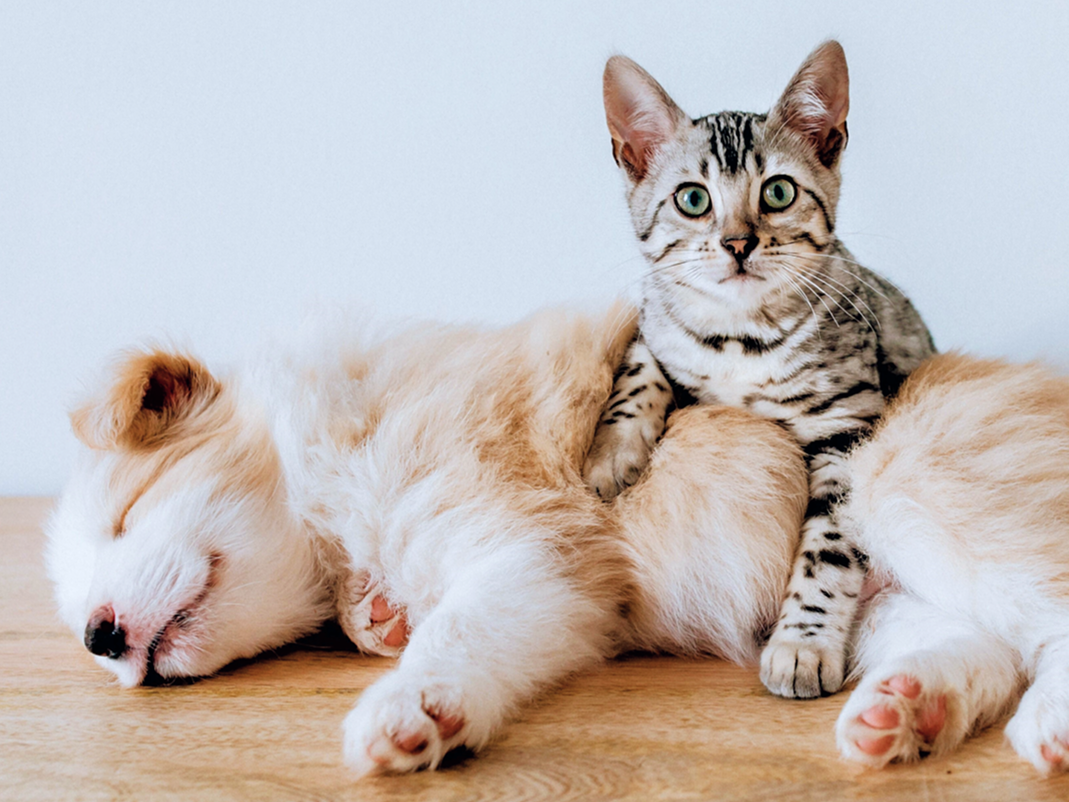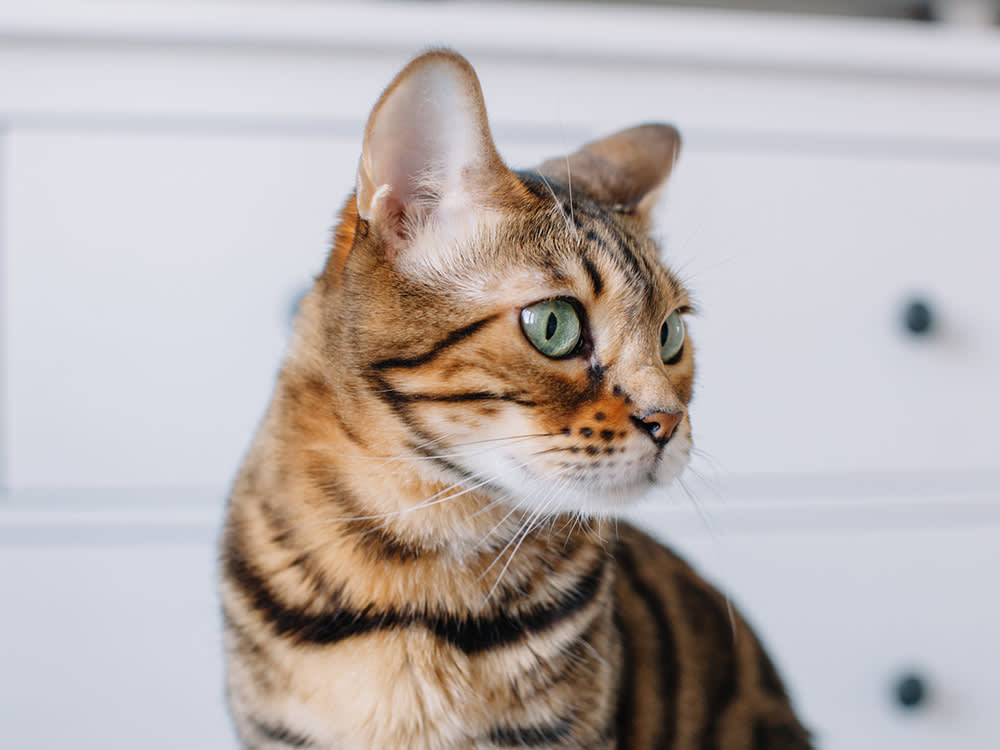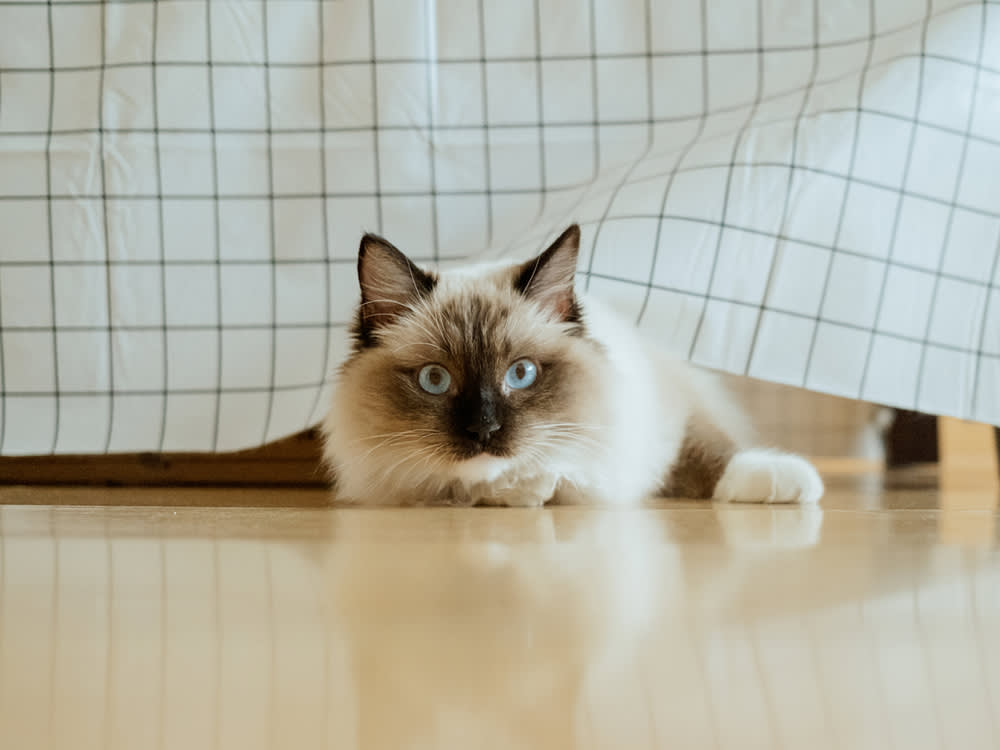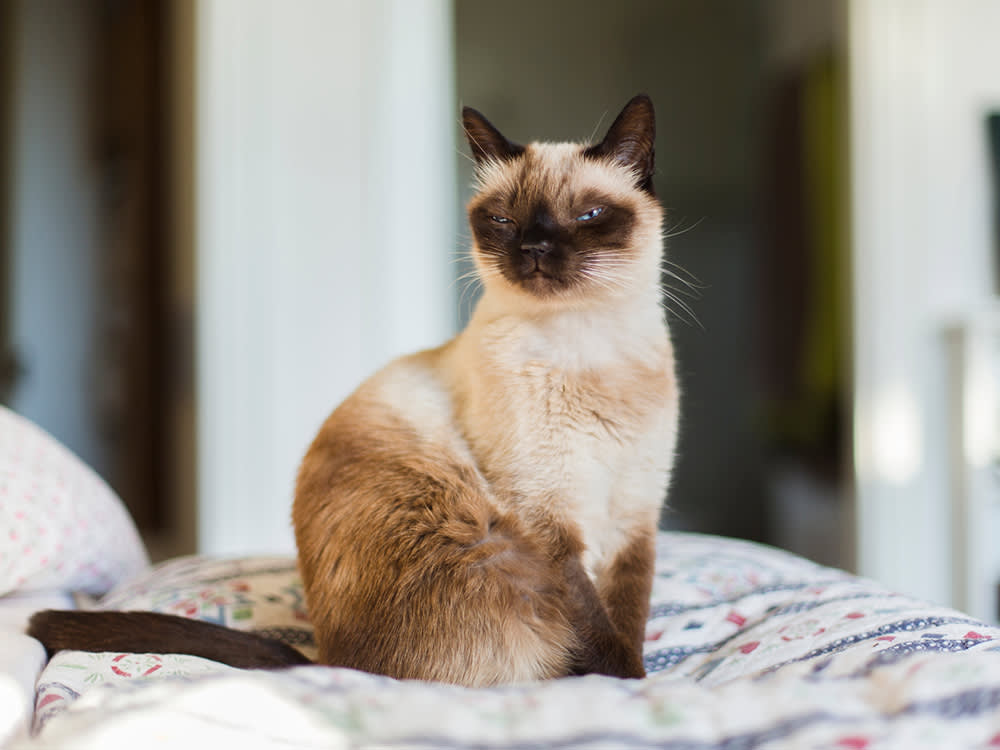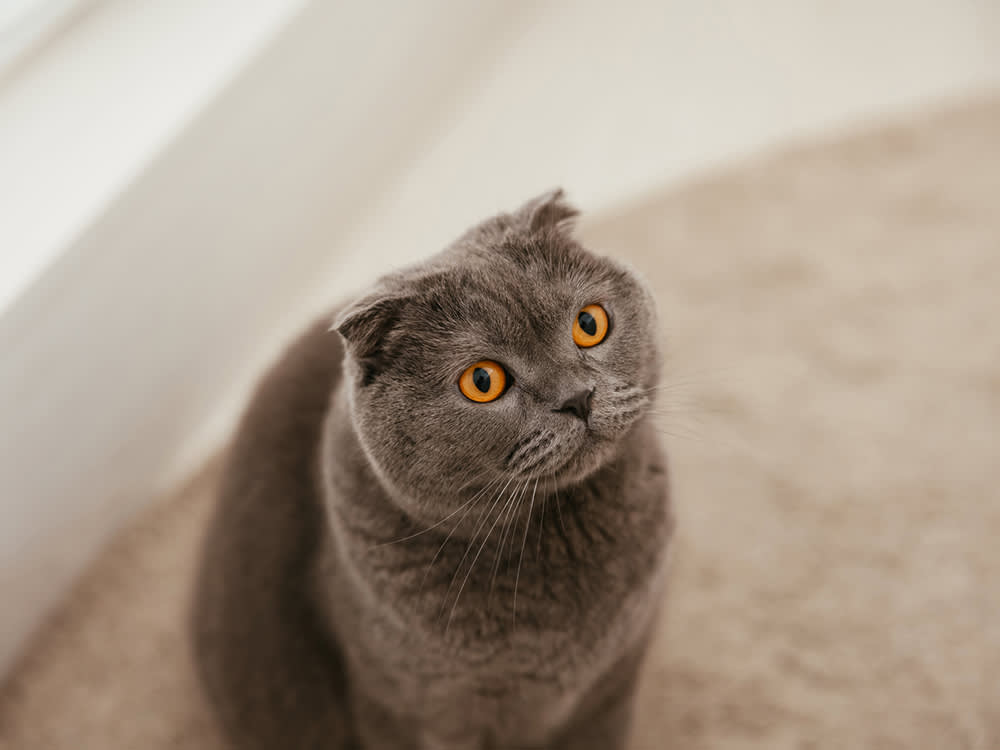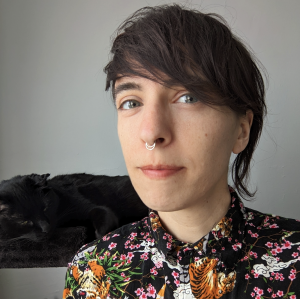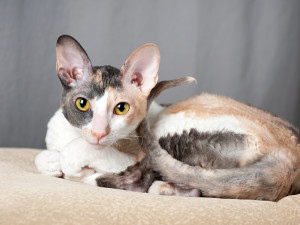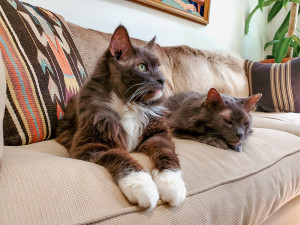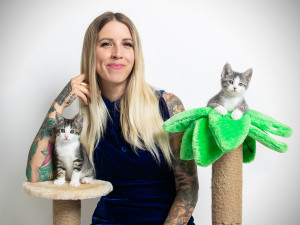7 “Purebred” Cat Breeds Likely to Suffer from Genetic Disorders
Especially while shelters are overcrowded, consider adopting a cat.
Back in 1871, the world’s first cat show took place at the Crystal Palace in London. The congregation of more than 150 cats ignited the love for “purebred” cats — such as the luxuriously-coated Persian — among the Victorian upper middle class and aristocracy. The event was conceived by Harrison Weir, an artist and cat-lover, who developed many rules for cat shows that are still used to this day.
But something not-so-pretty lies behind the veneer of gorgeous cats and feline fanciers. Purebred cats, unfortunately, face countless health issues as a result of being bred for specific traits from a limited gene pool.
Check out customizable policies from our friends at Lemonade Pet Insurance—so you only pay for what you need.
Which cat breeds have the most health problems?
The main problem is obvious — purebred cats are suffering from debilitating genetic conditions as a result of being treated like commodities to be produced. Many of the breeds that were brought to the earliest cat shows are still popular today, in addition to what we now call “designer breeds.” Meanwhile, shelters are struggling to find homes for pets.
“All purebred animals are by definition inbred and therefore prone to health problems and what these are will vary between breeds,” says veterinary surgeon Dr. Cat Henstridge, who goes by Cat the Vetopens in new tab on TikTok. “For some, they are vulnerable to conditions but won't definitely develop them, for example heart disease in Maine Coon cats. But for others, it is almost inevitable they will suffer.”
How much do you spend on your pet per year?
Here are of the breeds who face the most health issues.
Persians
With their luxurious coat of fur, the snub-nosed, doe-eyed Persian is one of America’s most popular cat breeds.
As cute as they are, two-thirds of these fluffy cats suffer from at least one health condition as a consequence of their limited gene pool according to researchopens in new tab conducted by the University of London’s Royal Veterinary College in collaboration with the University of Edinburgh.
Persian cats are brachycephalic, which refers to their flat-faced appearance that’s shared by other “purebred” animals, including Himalayans, exotic shorthairs, and pugs. Research shows that these long-haired felines often endure haircoat disorder, dental disease, overgrown nails, and eye discharge. These breeds are also commonly born with polycystic kidney disease (PKD), a genetic condition where cysts grow on the kidney and destroy the organ over time.
They might also experience an upper airway abnormality called brachycephalic airway syndrome (BAS), which is plagued by symptoms that make it difficult for the cat to eat and breathe, including include an elongated soft palate, pinched nostrils, arthritis, a narrow windpipe, and an obstructed airway.
Dr. Evan Antin had this to say about his mother’s brachycephalic rescue cat on Instagramopens in new tab: “These brachycephalic cat breeds are intentionally bred to look severely deformed and I don’t support it whatsoever and honestly it shouldn’t be legal. Please don’t breed these cats. Please don’t buy these cats.”
He added: “It’s really hard to live your best life when you can hardly breathe your entire life.”
Bengals
Bengals are known for being clever, playful, high-energy, and their wildcat-like appearance.
But these vocal cats frequently have hereditary health issues, such as cataracts — a cloudiness of the eyes that usually emerges in old age — and progressive retinal atrophy (PRA), an untreatable degenerative disease that causes blindness.
Bengals are also prone to hypertrophic cardiomyopathy (HCM), a hereditary feline heart disease that’s marked by the thickening of the heart muscles. This leads to a domino effect of health issues, including lethargy, difficulty breathing, an increased risk of congestive heart failure, and the development of arrhythmias (irregular heartbeats), according to Cornell University’s Feline Health Centeropens in new tab.
Ragdolls
It’s nearly impossible not to fall in love with the ragdoll cat’s silky fur, sky-blue eyes, and the fact that they look like a big stuffed animal. But these large cuddly felines are especially susceptible to HCM, thanks to a mutation in the MYBPC3 geneopens in new tab, which is unfortunately a problem also shared by Maine Coons.
The ragdoll cat’s problems don’t end there. Like Persians, they can run into PKD, an incurable condition caused by a defective gene. There is no treatment for it at the time.
Ragdolls are also at risk for obesity, developing blood clots and cryptococcosis, a fungal disease that affects cats, mostly along the Pacific coast in North America and parts of Europe and Australia. There are four kinds of cryptococcosis — nasal, nervous system, cutaneous (skin), and systemic — but the first one is the most common. It’s characterized by chronic sneezing, nasal discharge, and trouble with breathing. In the scenario that the disease attacks the cat’s central nervous system, it could lead to blindness and seizures.
Siamese
The chatty Siamese cat, with its dark-colored points and two-toned coat, are iconic. But, these lustrous shorthairs have a higher risk of certain cancers, such as mediastinal lymphoma, which tends to emergeopens in new tab in young feline leukemia-positive cats. They are also prone to intestinal adenocarcinomas (tumors).
“In cats, the Siamese is nearly twice as likely to develop intestinal cancer as other cats, and the incidence of adenocarcinoma is up to 8 times greater than in other breeds,” Dr. Debbie Stoewen DVM, MSW, RSW, PhD, wroteopens in new tab for VCA Animal Hospitals. They also may be affected by PRA, asthma, hip dysplasia, arthritis and pica — meaning they like to snack on things that aren’t food, such as packaging and clothes.
Exotic Shorthairs
Breeders created Exotic Shorthairs out of a design to invent a short-haired version of Persians. These round-headed, snub-nosed, chubby-cheeked felines look a lot like their long-haired cousins, and they face many of the same issues as brachycephalics. This includes a predisposition for PKD, PRA, heart issues, and breathing problems as a result of the shape of their skulls.
Scottish Fold
The Scottish Fold doesn’t appear to have more issues with ear infections compared to other cats. But its beloved ears hide a tragic health defect — their signature “fold” happens due to a lack of cartilage. This manipulation of their gene pool has led to a painful degenerative disease called Osteochondrodysplasia, also known as Scottish Fold Disease.
This is a dominant trait, meaning all Scottish Folds have it. The worst of its effects include the fusing of the joints within the tail, ankles, and knees, resulting in abnormally short, misshapen, inflexible limbs. The pain can be enough to deter cats from engaging in normal behaviors, such as jumping and walking, and over time, they may become completely unable to walk.
Manx
Just like with the Scottish Fold, there is an eponymous term for the health issues that frequently plague the Manx. Unsurprisingly, it’s caused by years and years of being bred to have no tail or a very short one. Manx Syndromeopens in new tab primarily affects the spinal cord, which, in turn, can lead to significant nervous system issues, such as spina bifida, a general term for the improper growth and formation of the vertebral arches. Manx cats with this condition may have an abnormal gait or face more serious issues, such as incontinence or a lack of feeling in the hind legs. It can even be fatal in some. Sadly, kittens with severe deformities may be euthanized.
Additional cat breeds with health problems
This list is by no means extensive. It’s sad to say it, but purebred cats are just more likely to suffer from genetic health conditions. Other cat breeds that are known for health problems include the Sphinx, the brachycephalic Himalayans and Burmese, plus Maine Coons, Norwegian forest cats, Cornish and Devon Rexes, British Shorthairs, and more.
As cat-lovers, we obviously want our felines to lead the best possible life, which leads some to seek a so-called responsible breeder. Buying from a “responsible breeder” may be a step up from a kitten mill, but no matter how much they sell cats out of a “love for the breed,” you can’t get away from the facts. Those animals were born of a limited gene pool and because of that, they’re more prone to painful health issues. Meanwhile, shelters are overcrowded with cats who are in need of a foster or a forever home. If you absolutely have your heart set on a purebred cat, look into a breed-specific rescue.
But, before you do, swing by your local shelter to meet the adoptable cats and consider giving them a chance.
